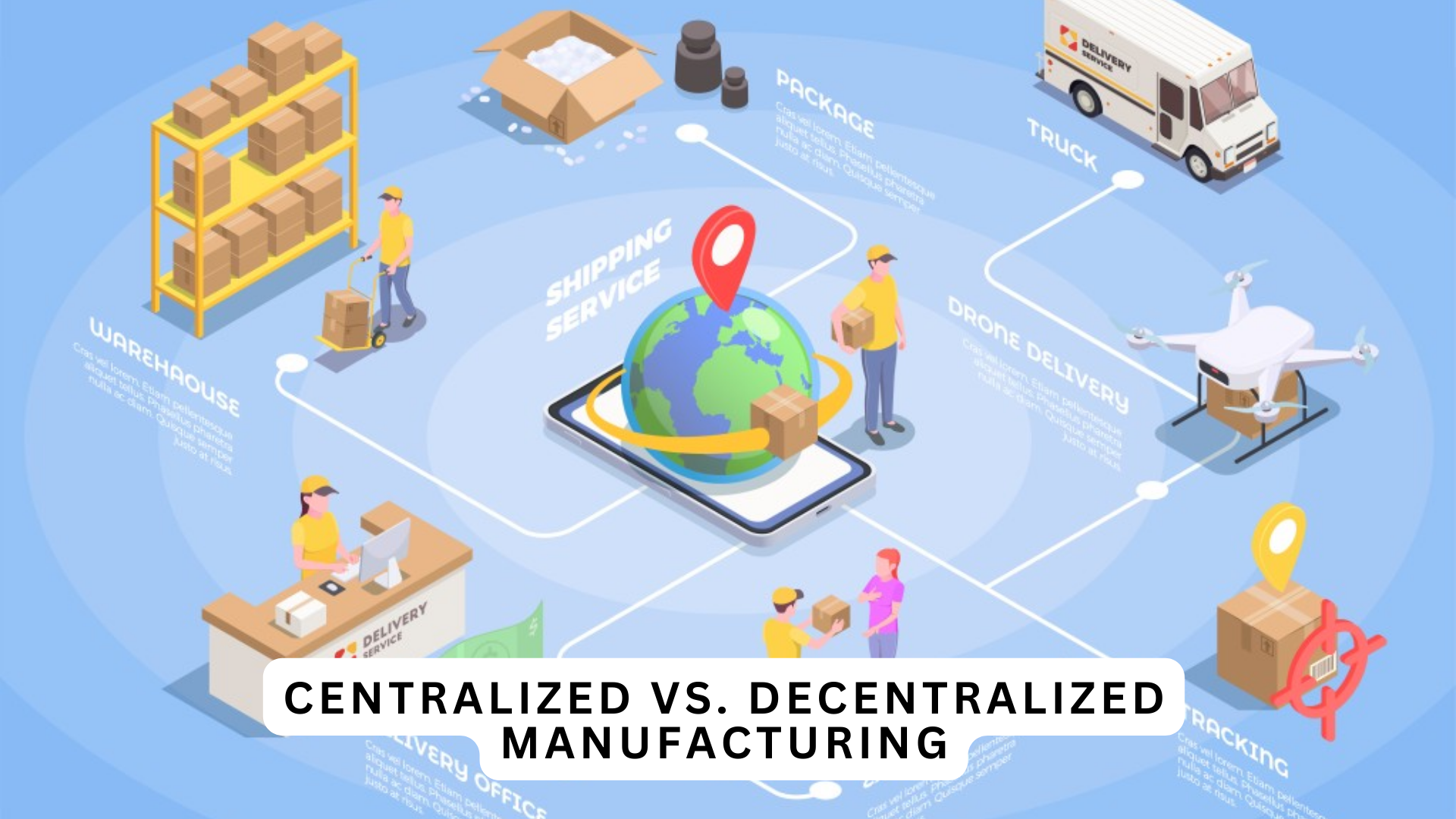Manufacturing strategy plays a pivotal role in determining the efficiency, flexibility, and profitability of a business. One of the most significant decisions companies face is whether to adopt a centralized or decentralized manufacturing model. Each approach has its own set of advantages and challenges, and the choice largely depends on the specific needs and goals of the business. This blog explores the key differences between centralized and decentralized manufacturing and offers insights to help you make an informed decision.
What is Centralized Manufacturing?
Centralized manufacturing refers to the concentration of production processes within a single location or facility. All manufacturing activities, including production, quality control, and distribution, are managed from this central hub.
Advantages of Centralized Manufacturing:
- Cost Efficiency: Centralizing production often results in economies of scale. By consolidating operations, companies can reduce overhead costs, negotiate better rates for bulk materials, and streamline logistics.
- Consistent Quality Control: With all production happening in one place, it is easier to maintain consistent quality standards. Centralized quality control systems can monitor and enforce uniformity across all products.
- Simplified Management: Managing operations from a single location simplifies oversight. Decision-making is streamlined, and communication is more straightforward, reducing the likelihood of misunderstandings and delays.
- Enhanced Collaboration: A centralized location fosters collaboration among employees, promoting innovation and cohesive teamwork.
Challenges of Centralized Manufacturing:
- Supply Chain Vulnerability: Relying on a single location can make the supply chain more vulnerable to disruptions such as natural disasters, political instability, or logistical issues.
- Limited Flexibility: Centralized systems may struggle to respond quickly to regional market changes or customer demands, leading to potential delays and lost opportunities.
- Higher Transportation Costs: If the central facility is far from key markets, transportation costs can be substantial, offsetting some of the cost savings from centralized operations.
What is Decentralized Manufacturing?
Decentralized manufacturing involves distributing production across multiple locations. Each facility operates semi-independently, catering to specific regions or product lines.
Advantages of Decentralized Manufacturing:
- Increased Flexibility: Decentralized systems can respond more swiftly to local market demands and changes, providing a competitive edge in rapidly evolving markets.
- Reduced Risk: By spreading operations across multiple locations, the risk of a complete production halt due to local disruptions is minimized.
- Lower Transportation Costs: Proximity to key markets reduces shipping distances and costs, improving delivery times and customer satisfaction.
- Market Penetration: Decentralized manufacturing allows companies to better understand and cater to regional preferences, enhancing market penetration and customer loyalty.
Challenges of Decentralized Manufacturing:
- Higher Operational Costs: Operating multiple facilities can lead to higher overall costs due to the duplication of equipment, staff, and overhead expenses.
- Complex Management: Coordinating operations across various locations adds complexity to management, requiring robust communication and control systems to ensure consistency and efficiency.
- Quality Control: Maintaining uniform quality standards across multiple facilities can be challenging, potentially leading to variability in product quality.
Choosing the Right Approach for Your Business
Deciding between centralized and decentralized manufacturing depends on several factors, including the nature of your products, market demands, and strategic goals. Here are some considerations to help guide your decision:
Market Demand and Distribution
- If your business serves a global market with diverse regional preferences, decentralized manufacturing might offer the flexibility needed to meet varying customer demands.
- For companies with a more homogenous market or products that require stringent quality control, centralized manufacturing might be more suitable.
Cost Considerations
- Analyze the cost implications of each model, including initial setup, operational expenses, and transportation costs. Centralized manufacturing typically benefits from economies of scale, while decentralized manufacturing might save on logistics and delivery costs.
Risk Management
- Consider the potential risks associated with each approach. If your business is highly susceptible to regional disruptions, decentralizing might mitigate the impact of localized issues.
Technological and Managerial Capabilities
- Assess your company’s ability to manage complex operations. Decentralized manufacturing requires robust management systems and technologies to coordinate activities across multiple sites effectively.
Long-Term Goals
- Align your manufacturing strategy with your long-term business objectives. Whether it’s expanding into new markets, enhancing operational efficiency, or maintaining strict quality control, ensure your chosen model supports your overarching goals.
Conclusion
Both centralized and decentralized manufacturing have their own merits and challenges. The key is to evaluate your specific business needs, market dynamics, and long-term objectives to determine which approach aligns best with your strategy. By carefully considering these factors, you can choose a manufacturing model that enhances your operational efficiency, meets customer demands, and drives sustainable growth.









